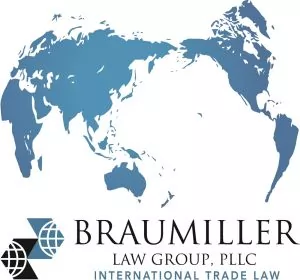- in United States
- within Energy and Natural Resources, Corporate/Commercial Law and Technology topic(s)
- in United States
- with readers working within the Retail & Leisure industries
For decades, supply chain planning, sourcing decisions, and landed cost analysis relied on stable and predictable duties and tariffs, along with carefully crafted and well implemented trade agreements such as USMCA. Businesses have used an array of tools to analyze cost and quality of goods, supply chain risk, and transportation costs. All these efforts came together to allow companies to develop business plans and purchasing strategies that could be reliably implemented and projected out over periods of six to nine months, or even a year or more into the future.
When section 232 and 301 duties were implemented in the first Trump presidency, tremors went through business processes that were long established to bring some measure of certainty to landed cost calculations in order to price goods for sale to wholesalers, retailers, and even consumers in B2C transactions.
The last six months have demonstrated that the tremors felt in the first Trump presidency have turned into major earthquakes and unpredictable outcomes in this second Trump presidency. With each change in tariffs and each trade agreement announced, businesses have reacted to adapt to these rapid changes or, in some cases, seek strategies to mitigate impacts of goods shipped before such changes but arriving after the changes took effect. Each tariff implemented, from IEEPA Fentanyl to IEEPA Reciprocal, to section 232 on steel and aluminum derivative products, to autos and auto parts, arrived with different rules and implementation details.
As importers have struggled to keep up with the changes, many have been reacting tactically to each new tariff or trade deal announcement and have not focused on a more overarching and strategic approach. Some businesses have rushed to implement duty drawback, while others have sought out help with setting up Customs bonded warehouses or Foreign Trade Zones. Many businesses have actively sought out new sourcing options and set up factories in new countries, only to discover that the new source of goods was impacted in the next round of tariffs.
Many businesses thus far in 2025 have not faced the economic reality that we are in a new phase of trade, whether we like it or not. Conducting business in a dynamic trade environment is now the new normal. Businesses must seek out a strategic and comprehensive approach to managing and mitigating supply chain risk, especially duty and tariff risk.
What does supply chain planning and cost management mean in a dynamic trade environment? Businesses can no longer take for granted that their current supply chains and suppliers are "locked in" for any length of time. Businesses with flexible options will weather this storm the best.
Let's look at a more strategic approach that a business might take. First, take nothing for granted. Game out multiple scenarios on a continuous basis. What would happen if a major supplier was taken out by an earthquake or was made non-viable by a major tariff imposed on the country of manufacture? What will you do if tariffs increase, then decrease?
Second, think of a comprehensive strategy for the changes that might happen. Simply setting up one solution such as an FTZ might work well if tariffs are increasing, but might not be as useful in an environment where tariffs might decrease. Here is one example of a comprehensive strategy for a business to stay competitive in this dynamic trade environment:
- Conduct a thorough evaluation of all goods. Are they properly classified and is the correct country of origin declared?
- Evaluate if tariff engineering can be used properly to change HTS codes and origins for a more reasonable duty and tariff impact.
- Implement multi-sourcing wherever possible to maximize country source flexibility in the face of sudden changes in duties and tariffs.
- Determine if duty drawback can help reclaim duties and tariffs on exported or destroyed goods. Set up a duty drawback program to claim duties and tariffs from as far back as five years ago (subject to one time waiver approval).
- Evaluate feasibility of a Foreign Trade Zone (FTZ) and implement one, along with a Customs bonded warehouse, as a more complete strategy to anticipate both increasing and decreasing duties and tariffs.
- Spend more on trade compliance to ensure that your internal processes are strong and proven to help protect yourself from surprise tariff bills and penalties. This will also help to bolster your audit capabilities and uncover any errors or other patterns of concern that you should be aware of. With the ramping up of customs enforcement, trade compliance is not an area where you want to cut corners, now more than ever.
- Partner with trusted advisors and consultants who are subject matter experts and working hard to keep up with current events, tariffs, enforcement efforts, and trade policy changes. These partnerships will pay dividends as most importers struggle to stay current with everything that is happening. The right partnerships here will save you time, money, and aggravation in the long run.
- Know when to get legal help and support. Recognize when CBP is signaling that they have concerns and when you discover internal compliance issues that are tied to major liabilities. CBP is moving to formal investigations more rapidly and with less warning than ever before. Your window of opportunity to mitigate the damage is shrinking. It is much easier to fix problems if you take the lead and file any necessary prior disclosures before CBP initiates a formal investigation.
Many companies have started this strategic process already by looking into setting up an FTZ or a bonded warehouse. However, it is becoming increasingly apparent that a more strategic approach would be to implement both an FTZ and bonded warehouse together and create a more flexible business process to optimize the use of both as tariffs move up and down and new trade agreements are signed.
An FTZ is a more flexible tool to fulfill eCommerce orders to consumers and to quickly ship out orders to commercial customers or distributors. It also can be used for manufacturing and other operations that fall under "production". An FTZ is especially useful for locking in tariffs on imported goods where an importer is concerned that the duties and tariffs may increase in the future. While this is not guaranteed, as witnessed recently by implementation of certain section 232 tariffs that were applied to zone goods retroactively, the use of "privileged foreign" status to lock in current duties and tariffs is generally a rule rather than the exception. Where a FTZ may fall short is when future tariffs might decrease or when current tariffs drop unexpectedly. This is where operating a bonded warehouse in conjunction with your FTZ would be most helpful.
Class 2 (private) and class 3 (public) bonded warehouses offer a useful tool to importers when they believe that future tariff rates might decrease, such as when a trade deal is imminent, or a high tariff was implemented with the hopes that it might be reduced if certain US demands are met. While the bonded warehouse is less flexible than the FTZ, it excels at storing goods without payment of duty and paying the duty rate in effect at the time the goods are to be withdrawn. Bonded warehouses do not generally support manufacturing, although there are carveouts for specific commodities such as aluminum smelting, and they are not good for fulfillment of orders. They are much better at replenishing inventory in the regular or FTZ warehouse where fulfillment can happen more quickly. This is due to the duty payment process for bonded warehouse entries and the potential delays that it introduces into the business process flow.
While goods in a bonded warehouse that are not "duty paid" cannot be moved into an operators FTZ, an FTZ operator may opt to pay duties on bonded warehouse goods and then transfer them into their FTZ in Domestic (D) status as "foreign duty paid". They may then be handled as regular FTZ goods.
The bonded warehouse may be located inside the FTZ footprint or the FTZ operator may choose to place it outside the FTZ footprint. There are advantages and disadvantages to both set-ups.
While a paired strategy of FTZ and bonded warehouse may be the most flexible approach in the current trade environment, it will come with considerable expense. Traditionally, evaluations of FTZ and bonded warehouse feasibility were based on return on investment or ROI. Because of the uncertainty and volatile tariff and trade changes, businesses may need to look at other criteria besides cost versus savings based on current tariffs and trade agreements. It will also be vital to do business process mapping to gain a more complete understanding of how the business process will flow in order to maximize the potential savings while minimizing the risk of process failures that could expose the operator to Customs penalties or liquidated damages.
Working with a consultant who has experience implementing both bonded warehouses and FTZ's, as well as implementing both together, and understands how to make sure business process mapping is done correctly is extremely important. Braumiller Consulting Group has the experience and expertise in this area and can help your business make the correct decisions and then help you implement your plan quickly and successfully.
Check out our new Digital Magazine Get the inside scoop on the Braumiller Law Group & Braumiller Consulting Group "peeps." Expertise in International Trade Compliance.
The content of this article is intended to provide a general guide to the subject matter. Specialist advice should be sought about your specific circumstances.


